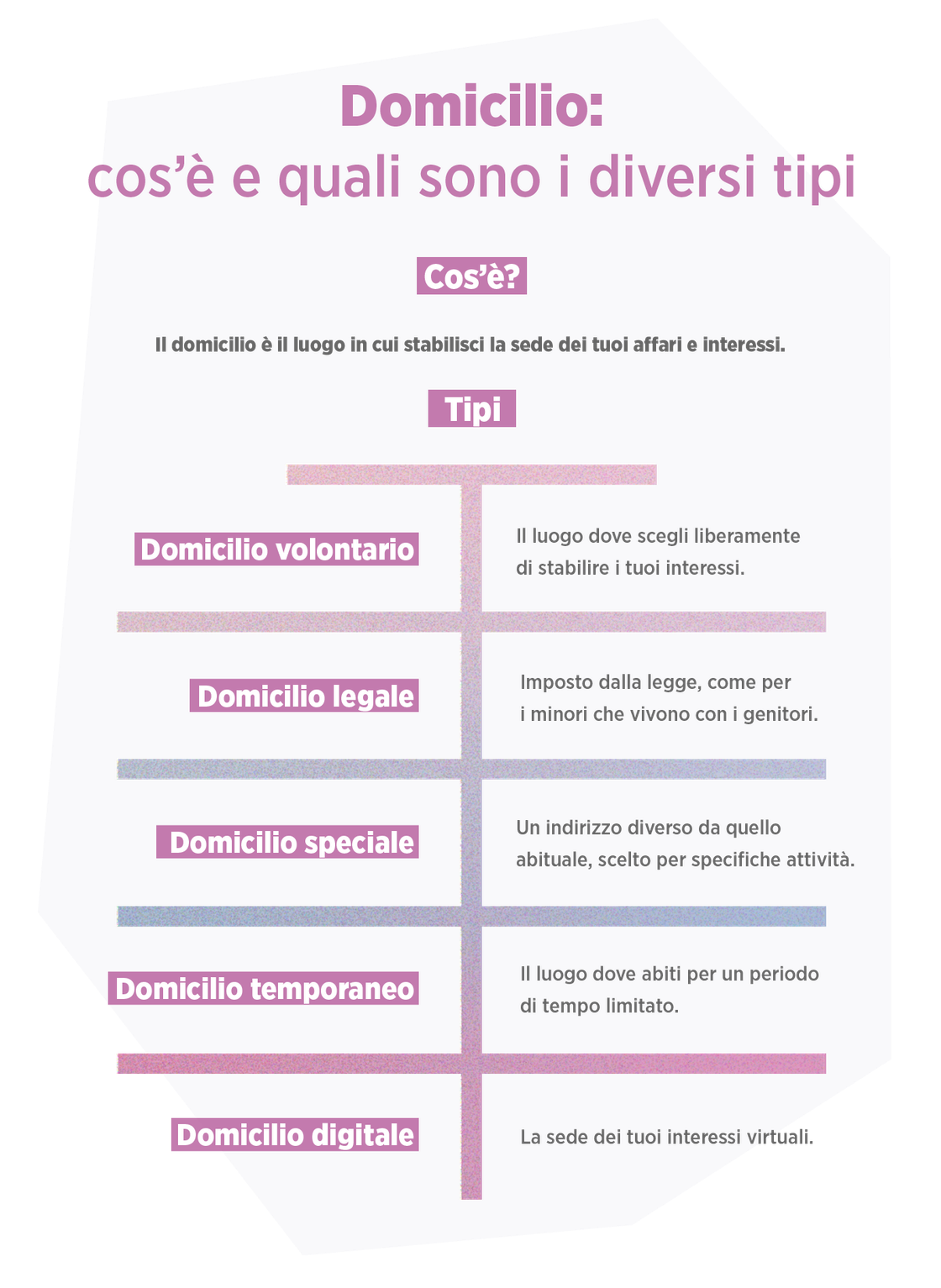Index
What we talk about in this article
- What is domicile and how is it different from residence
- What are the different types of domicile
- How to fill out the change of domicile form: facsimile
Changing domicile, residence, home: three different procedures that often leave behind a lot of confusion. In everyday life, we don't make a great distinction between domicile, residence, and abode; on the contrary, we often use them as synonyms to define the place where we live without paying too much attention to the nuances of meaning. To change your domicile, you must submit a declaration to the municipality of residence.
At a legal and administrative level, however, residence, domicile and abode indicate three very different situations precisely regulated by our laws.
Domicile, in particular, is defined as The place where a person "has established the principal seat of their business and interests," and may be located at an address other than their home address. So, what happens if they change their address for some reason? Do you need to renew your documents or fill out a form to change your address? And if so, which one, and how? Don't panic about the bureaucracy!
In this article, we'll talk about how to change your address with a simple self-certification. You will also find a PDF facsimile ready to download and use according to your needs.
What is domicile and how is it different from residence
It is the Italian Civil Code that regulates the concepts of domicile, residence and abode in our legal system. Without getting lost in too much "legalese" language, let's quickly see what the main differences are between the terms:
- residence is the place where you officially live and which appears on your identity documents;
- domicile is, as we have seen, where you establish the headquarters of your "business and interests".
- finally, abode indicates the place where you reside temporarily and for a limited period of time.
Let's take a closer look at the differences. If you live and work in the same city, residence and domicile can coincide. If you go on a two-week seaside vacation and stay in a hotel, that hotel represents your home for the duration of your stay.
If, however, you leave your place of residence to move elsewhere for work or other reasons, you can keep your residence at the same address and file a declaration of domicile different from residence in the new place where "your business and interests" are located, to use the code words.
What are the different types of domicile
Domicile can be classified in different ways based on its characteristics. Let's look at the most important categories.
Voluntary Domicile and Legal Domicile
The first major distinction is between voluntary domicile and legal domicile. Voluntary domicile is where the individual freely chooses to establish his or her own interests, while in the case of legal domicile there is no choice but an imposition by law. This is the case, to cite the most common example, of minors who are domiciled at the residence of their family or guardian.
General and special domicile
In some circumstances, in addition to your domicile, which generally represents the seat of your interests and business, you have the option of indicating a different address for certain specific activities, to be communicated with a specific declaration of special domicile in the form of a self-certification.
Temporary domicile
Then there is the possibility that you are forced to leave your place of residence for a limited period of time due to reasons of force majeure. For example, if you move to another city to attend a course of study, or if you are transferred for work for a few months. If you find yourself in this situation, you can produce a self-certification of temporary domicile according to the methods we saw in the article dedicated to the topic.
Digital domicile
A novelty in recent years is the possibility of electing a digital domicile as the seat of one's virtual interests. To do this, you need a certified email address (PEC) registered in the appropriate register.
How to fill out the change of address form: facsimile
In Italy, there is no general obligation to issue a declaration of domicile and there are no official documents or procedures as required for the declaration of residence.
When domicile and residence do not coincide, you can produce a self-certification of domicile to communicate all your contact information in case you need it for your relations with the public administration or with your employer.
In the certificate, it is sufficient to indicate:
- your personal data;
- the complete address of your new address with house number, postcode and information on the internal and external number if necessary;
- your telephone number;
- the signature with which you assume full legal responsibility for the declaration.
You can submit the change of address form in person or send it by certified email or fax, attaching a copy of an identity document. Download the facsimile for the change of domicile declaration here, which you can print and use when you need it.

The paperwork for changing your residence and declaring your domicile is undoubtedly among the most tedious parts of moving house. Don't let the paperwork deter you from looking for the perfect place for you! And don't forget that on our classifieds platform, you can browse hundreds of carefully selected properties and find the perfect solution for you—we're sure of it.
